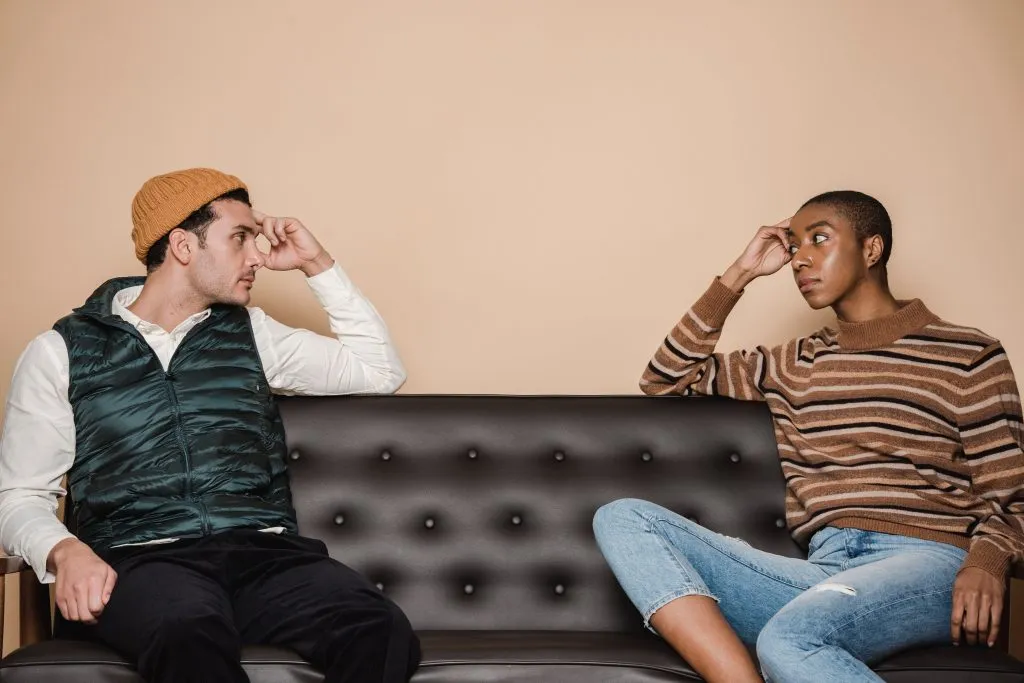Identifying your attachment style (and your partner’s) can offer valuable insights into the dynamics of your relationship. What may seem like your partner’s shortcomings, might actually be an activated childhood wound rooted in unmet needs. Understanding this allows us to navigate differences with less judgment, and more compassion.
What is Attachment?
Attachment styles are intricate patterns of emotional and relational behaviors formed in early childhood. These patterns are carried into adulthood and often show up most prominently in romantic relationships. There are four main types of attachment styles: secure, anxious, avoidant, and disorganized. It is important to note that these styles are not set in stone, and we all have the ability to form secure attachments.

Secure Attachment Style
Secure attachment is the ideal relational template, allowing the harmonious swing between connection and independence. Securely attached individuals likely grew up with caregivers who were consistent, loving, and predictable. In adult relationships, these individuals are comfortable with intimacy and trust their partners. They can communicate their thoughts, feelings, and needs and resolve conflict without much escalation.
Insecure Attachment Styles
People with avoidant attachment styles feel overwhelmed by emotional intimacy, often stemming from caregivers who were not present or were emotionally unavailable. In adulthood, these individuals become hyper-independent as relying on others has let them down in the past. While they may appear self- sufficient, they can struggle with emotional detachment, leading to feelings of distance in relationships. Healing requires patience and reconnection with a safe partner at a pace that doesn’t overwhelm the avoidant individual.
Anxiously attached people seek reassurance and validation from their partner. During childhood, these individuals likely received care that was unpredictable and inconsistent, forming the belief that love is conditional. As adults, these individuals become hypersensitive in relationships, subconsciously anticipating abandonment. They can emotionally react before anything actually happens. Consistent and reassuring partners play a crucial role in healing for those with anxious attachment.
This attachment style is characterized by a combination of anxious and avoidant patterns. Those with disorganized attachment may also struggle with a persistent threat response and/or periods of dissociation. In childhood, these individuals likely experienced caregivers as frightening and unreliable. Due to a deep-seated fear of rejection and abandonment, as adults, they both crave and avoid intimacy. This internal conflict can lead to intense emotional turbulence in relationships. Partners that feel safe and predictable are paramount for healing a disorganized attachment pattern.

Healing your Attachment Adaptations
All insecure attachment adaptations served us at one point in our lives. When we find safe adult relationships, those protective patterns may no longer be needed and without mindful awareness, we can react in ways that hurt our loved ones. The good news is with a curious and compassionate mindset, we can rewrite the blueprints for our relationships. As Dr. Diane Pool Heller aptly puts it, “We are fundamentally designed to heal.”
If this work feels overwhelming, I encourage you to partner with a mental health professional who can safely support you as you grow. Through therapy, you can:
- Gain Self-Awareness
- Identify your attachment-style
- Observe how it shows up in your romantic relationships
- Become more aware of your emotional needs and triggers
- Heal Past Wounds
- Explore past experiences or traumas contributing to your attachment style
- Overcome obstacles keeping you from secure attachment
- Integrate positive practices such as affirmations, reframing anxious thoughts, and more
- Develop Secure Attachments
- Practice better communication skills to express your feelings and needs more effectively
- Learn how you and your partner can support each other’s attachment challenges
- Enjoy healthier and more intimate connections
Want to know your style? Check out this free quiz by Dr. Diane Poole Heller!
